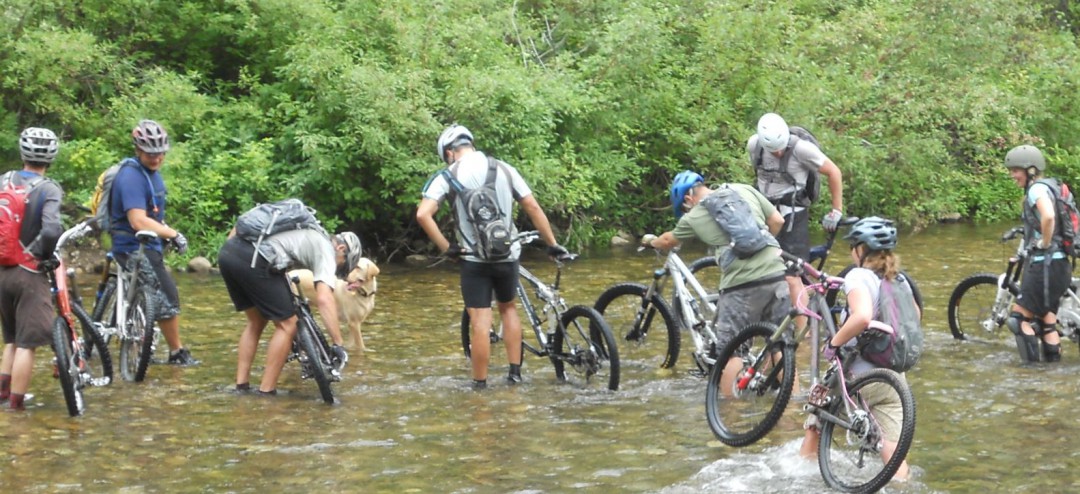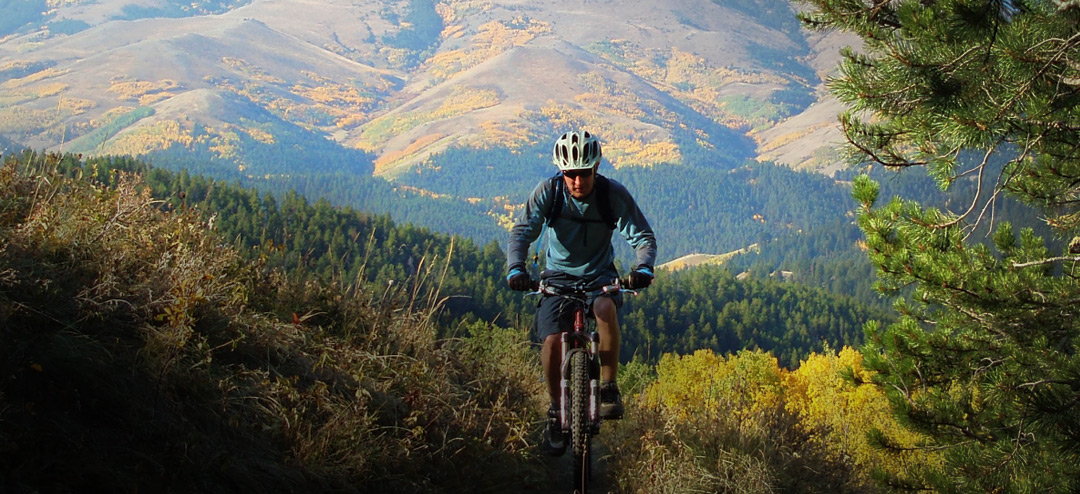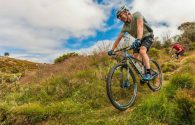The WAR between Recreationalists vs. Preservationists over our National Forests
In the long running war between those who would protect our wild areas for appropriate public recreation and those who would preserve more acres for the spiritual value of Wilderness alone, the recreationalists may finally have some forward momentum. The fact that Forest Supervisor Bill Avey included even the possibility of continued bicycling in Recommended Wilderness Areas as a Forest Plan alternative is perhaps the biggest blow to preservationists in 12 years. Now recreationalists have a chance to continue that momentum by supporting a judge’s ruling that the USFS overstepped their bounds by banning bicycling in the Sapphire- Blue Joint Wilderness Study Area near Hamilton, MT. The Bitterroot NF Supervisor has re-opened comments on the Forest Use Plan that would have banned bicycling in the area. AS MANY BICYCLISTS AS POSSIBLE need to comment to encourage the USFS to allow continued bicycling there.
To: Bitterroot Forest Planners,The Montana Mountain Bike Alliance (MMBA) was organized in 2007 to provide a united voice for mountain bike riders across Montana. Our mission is to preserve, protect, and promote mountain bike access and diverse riding opportunities on Montana’s public lands through education, communication, and unified action. We promote and educate our constituency regarding public land stewardship, social etiquette and the environmentally sensitive practices of trail riding and maintenance.
MMBA’s constituents value big, wild landscapes, fresh air, clean water, abundant wildlife and sustainable, accessible trail systems. Our members have contributed thousands of hours working collaboratively with our partners to maintain and make safe the trails for all recreationalists who share these wild landscapes. In the face of increasing wildlife habitat concerns, recreational pressures and climate change, MMBA believes that pro-active, science-based management of our public lands is preferred to default restrictions and bicycle banning policies that have been randomly applied across Region One.
The following are MMBA comments on trails within the Blue Joint and Sapphire Wilderness Study Areas.
Summary
The Montana Wilderness Study Act of 1977, over the 40+ years of it’s existence, has been hijacked by zealous conservation organizations who have pressured various Regional Forests to overreact to court rulings, disenfranchising public access to motorized and bicycle recreation. Bitterroot National Forest has initiated Travel Plan restrictions that go far beyond the intent of the 95th Congress. Now in 2018 its past time to manage rather than eliminate recreation.
Congressional Intent
From the Committee on Interior and Insular Affairs, Representative Morris Udall issued a report September 28, 1977. The report accompanied final legislation for S 393. This vital report covered details for the act plus dissenting views that were left from the final act for brevity. Here is the report’s final paragraph:
Off Road Vehicle Use
“The use of off-road vehicles, while generally prohibited in designated wilderness areas, is entirely appropriate in wilderness study areas, including the nine areas in S. 393. Nothing in S. 393 will prohibit the use of off road vehicles, unless the normal Forest Service planning process and travel planning process, which applies to all national forest lands, determines off road vehicle use to be inappropriate in a given area. Of course, commonsense dictates that certain areas may be temporarily closed to off road vehicle use where fire danger or physical damage to terrain indicate closure is warranted. However, absent such circumstances or Forest Service planning decisions, it is the intention of the committee that the areas in S. 393 (and other wilderness study areas) remain open to off road vehicle use unless and until they are formally designated as wilderness.”
During October 18, 1977 House hearings for S 393, several topics were explained and debated. One topic was continued use of off road vehicles within Wilderness Study Areas. The other topic was the fear of creating de facto wilderness that would endure into perpetuity. Both of these topics were tied to an air of urgency to pass the bill, in order to start the five-year timeline for wilderness study and two-year timeline for presidential recommendation. Congressional committee was assured that the study and recommendation process could occur within those seven years. Hope was expressed that amendments could be added later. The Montana Wilderness Study bill was passed weeks later in November 1977.
The bill did not contain language about off road vehicle use; this language was understood and contained in the previous committee report. During the House hearing, this topic was visited again. Congressional intent by both parties, and by both proponents and opponents of the bill, was to allow continued vehicle access to these Montana areas until such a time they become congressionally designated. After examining congressional record it’s apparent without any doubt that S 393 would not have passed unless this fact of management was true.
Here follows excerpts from the October 18, 1977 hearing:
Teno Roncalio, a Democratic Representative from Wyoming, states: “Under the law, wilderness study areas are to be managed so as to preserve their wilderness characteristics. However, this does not mean they are to be managed as if they had already been designated as wilderness. For example, in wilderness study areas the use of off road vehicles is permitted. In designated areas it is not.”
Gillis Long, a Democratic Representative from Louisiana, states: “Additionally, the bill contains a provision which allows existing uses such as snowmobiling and off-road vehicle use to continue virtually unaffected during the course of the study.”
Max Baucus, a Democratic Representative from Montana read from a letter by Rupert Cutler, USDA Assistant Secretary. “The use of off-road vehicles, while generally prohibited in designated wilderness areas, is entirely appropriate in wilderness study areas, including the nine areas contained in S 393. Nothing in S 393 will prohibit the use of off-road vehicles, unless the normal Forest Service planning process and travel planning process, which applies to all national forest lands, determines off-road vehicle use to be inappropriate in a given area. Of course, commonsense dictates that certain areas may be temporarily closed to off-road vehicle use where fire danger or physical damage to terrain indicate a closure is warranted. However, absent such circumstances or Forest service planning decisions, it is the intention of the committee that the areas in S 393 (and other wilderness study areas) remain open to off-road vehicle use unless and until they are formally designated as wilderness.”
Representative Max Baucus also read a letter from Derrick Crandall, Director of Government Affairs for the International Snowmobile Industry Association:
“As you know, both the Montana Snowmobile Association and our organization originally were actively opposed to the legislation during the 94th Congress because of the immediate closure of areas now open to snowmobiling which would have resulted.”
“Subsequently, and in part through your efforts, clarifying statements by the Senate author of the legislation have asserted that current snowmobiling usage shall be authorized until and unless Congress acts to designate these areas as Wilderness because snowmobiling results in no permanent, adverse effects.” “We rely upon your judgment to protect the legitimate interests of snowmobilers in Montana.”
Were the Democratic Representatives trying to bait and switch the facts? Were they trying to deceive opponents about bill details? We say not, the record is irrefutable. We believe that Congress intended for recreational activity to continue, subject to management adjustments in order to maintain wilderness characteristics. In other words, recreation activity alone doesn’t degrade wilderness character. Frequent and flagrantly abusive activity would be required to create negative impacts to the land. Such activity hasn’t occurred; in fact bicyclists have been proven stewards for the betterment of the resource. Time hasn’t altered the legislation, after 40+ years these areas are still wilderness study areas, and after 40+ years the language and intent of the Act still prevails.
Governmental Management
Excerpts from the “Status and Use of Wilderness Study Areas” by James Duffus lll Director, Natural Resources Management Issues, United States General Accounting Office. Resources, Community, and Economic Development Division; a Sept. 23, 1993 letter to Bruce Vento, Chairman of Subcommittee on National Parks, Forests, and Public Works:
“Notwithstanding this general mandate, the Congress has allowed for certain uses other than primitive recreation in wilderness study areas. For example, various types of motorized and mechanized recreation are allowed, such as riding all-terrain vehicles, motorcycles, snowmobiles, and mountain bikes. Such types of recreation occur in over 75 percent of wilderness study areas.”
“Despite the different views about the effects of uses in study areas, the ultimate decision about wilderness designation rests with the Congress. Once an area is designated as wilderness, motorized and mechanized uses are generally prohibited.”
“Various Uses Exist in Study Areas. We divided the major types of study area uses into three categories:
1. primitive recreation, such as hiking, backpacking, fishing, and hunting;
2. motorized and mechanized recreation, such as using off-road vehicles, all terrain vehicles, snowmobiles, and mountain bikes; and
3. nonrecreational uses, such as mining, livestock grazing, and mineral leasing.”
While this next important excerpt is relatively recent when compared to the age of the Montana Wilderness Study Act of 1977, it does note how the wilderness characteristics of 1977 may differ from today’s evaluations of wilderness characteristics within designated Wilderness. It notes that 1977 standards are to be used. This 2008 guideline (currently in affect) also makes a clear distinction showing that off-road vehicle use of any kind is apart from wilderness characteristics of 1977:
FOREST SERVICE MANUAL
NORTHERN REGION (REGION 1) MISSOULA, MT
FSM 2300 – RECREATION, WILDERNESS, AND RELATED RESOURCE MANAGEMENT
2329 – MANAGEMENT OF WILDERNESS STUDY AREAS
1. Manage Montana Wilderness Study Areas (MWSA) to maintain wilderness character as it existed at time of designation (1977) and potential for inclusion of the area in the National Wilderness Preservation System (NWPS).
a. When making project level decisions (for example, trail maintenance, relocation, improvement, construction, reconstruction, permitted uses, and closures), the line officer must consider the effect of the decision on the wilderness character as it existed in 1977 (see Exhibit 01 for definition of wilderness characteristics).
b. If wilderness characteristics have been degraded, restore the area to 1977 conditions. That is, if a trail was single track and has evolved into two-track, close the trail to two-track use and restore it to single track use, or allow natural restoration where effective. If conflicting uses are occurring, consider separating the uses geographically through an appropriate planning process. That is, identify areas for snowmobiling and areas for cross-country skiing and snowshoeing.
c. Trails should not be upgraded to a more-developed standard than existed in 1977. d. Pursuant to 36 CFR 212.52 (2), the line officer shall institute closure of a trail in a Wilderness Study Area if use is causing or will cause considerable adverse effects on resource values referred to in Sec. 212.52 (2), until the effects are mitigated or eliminated.
2. Management of existing uses and facilities.
a. At the time of designation of the areas, uses that existed in 1977 can be allowed to continue subject to 36 CFR 212.57. If increases in amount of use occur, the line officer should consider how the increases affect wilderness character and the area’s potential for inclusion in the NWPS. If negative effects are noted, implement actions as described in 1.b. of this policy.
b. Facilities that existed in 1977 can continue to exist, be maintained, or reconstructed. This may include administrative structures or structures in support of permitted activities such as grazing allotments or outfitter and guide permits.
3. New uses, activities, and facilities.
a. When evaluating new uses, resource management activities, or administrative facilities in the WSA such as prescribed fire, tree planting, trail construction, or special use permits, document how the use, activity or facility maintains the wilderness character and the potential for the area’s inclusion in the NWPS.
b. Uses, activities, or facilities that are detrimental to or do not maintain or enhance the wilderness character and potential for the area’s inclusion in the NWPS will not be allowed.
c. All terrain vehicles (ATVs) and motor bikes may be allowed on roads that had jeep use in 1977 (two tracks).
d. Mountain bikes may be allowed on trails that had established motor-bike use in 1977, or on non-motorized trails as longs as the aggregate amount of mountain bike and motorcycle use maintains the wilderness character of the WSA as it existed in 1977 and the area’s potential for inclusion in the National Wilderness Preservation System.
4. Monitoring. Forests and Grasslands shall monitor WSAs to ensure that the wilderness character is not diminished beyond what existed in 1977 and to ensure that the areas are maintained for potential inclusion in the NWPS. Monitoring WSAs will be covered through the encompassing monitoring program for the Land and Resource Management Plan (LRMP).
5. Administrative Use of Motorized Equipment. Motorized equipment; chainsaws, motorized rock drills, wheelbarrows, mini trail excavators and other similar trail machines are allowed for project work. For fire suppression, utilize MIST tactics to minimize impacts to resources where possible without jeopardizing firefighter safety. Dozers may be allowed for fire suppression. Special approval for use of motorized equipment and mechanical transport resides with the designated line officer. As near as possible, all firelines and dozer firelines must be rehabilitated to their condition prior to the fire.
6. Public Notification of Wilderness Study Areas. Post WSA trailheads with posters and/or maps indicating the WSA boundary, description of agency legal responsibilities and any travel management restrictions. Include the WSA boundary on forest visitor maps.
2329 – Exhibit 01
Definitions of Wilderness Characteristics
Natural Integrity—The extent to which long-term ecological processes are intact and functioning. Impacts to natural integrity are measured by the presence and magnitude of human-induced change to an area. Such impacts include physical developments (for example, roads, trails, utility rights-of-way, fences, lookouts, cabins, recreation developments, livestock grazing, mineral developments, wildlife/fisheries management activities, vegetative manipulation, and fire-suppression activities).
Apparent Naturalness—The environment looks natural to most people using the area. It is a measure of importance of visitors’ perceptions of human impacts to the area. Even though some long-term ecological processes of an area may have been interrupted, generally the area landscape appears to be affected by forces of nature. If the landscape has been modified by human activity, the evidence is not obvious to the casual observer, or it is disappearing due to natural processes.
Opportunities for Primitive Recreation Experience—The area provides opportunities for isolation from evidence of man, a vastness of scale, feeling a part of the natural environment, having a high degree of challenge and risk, and using outdoor skills characterized by meeting nature on its own terms without comfort or convenience of facilities.
Opportunities for Solitude—Isolation from sights, sounds, presence of others and developments of man, focusing on features of the area that offer users outstanding opportunities for solitude; size of the area, presence of vegetation and topographic screening rather than focusing on amount of use.
Wilderness characteristics are taken from the Wilderness Attribute Rating System—a system that was designed in 1977 to assess the capability of roadless areas for wilderness recommendation. This was the system used to rate the Montana Wilderness Study Areas in the study mandated by the WSA Act of 1977. These definitions may differ from definitions of wilderness characteristics in areas within the National Wilderness Preservation System.
(end of FSM 2329)
Conclusion
There is a great difference, a distinction between managing an area to maintain its wilderness characteristics, and managing an area as de facto wilderness, which the Travel Plan proposes. Given the restrictive direction that Bitterroot National Forest has taken it’s easy to understand why wilderness study area release bills are being seriously considered within the House and Senate.
By completely eliminating all motorized and bicycle access within the Blue Joint and Sapphire Wilderness Study areas, the agency has leapt well beyond Congress’s original management intent, violating the trust in Congress that was needed to pass S 393 in the first place. Congress was repeatedly assured that off-road vehicle access would continue. Congress saw more restrictive management as creating de facto wilderness, something to be avoided.
These Wilderness Study Areas had motorized access without restrictions in 1977. FSM 2329 clearly shows how recreation should be managed if resource damage shows a decline of wilderness characteristics. Management by closure to recreational activities was never the intent of Congress. Management of this type, disregarding the public’s trust by implementing unwarranted closure, has fostered great distrust and could impair future efforts to conserve wild areas.
Travel Planning trail mileage charts are inconsistent, do not tally correctly and make it impossible for Bitterroot National Forest or the public to accurately speak about trail statistics. Road and trail data is often confusingly interchanged. But mileage statistics actually detract from the true access and resource issues.
Bitterroot National Forest has failed to maintain the Wilderness Study Area trails. Dozens of trail miles have been rendered unusable by pervasive deadfall during the brief trail closure, a waste of public resource. When the area was opened summer of 2018, members of the Bitterroot Backcountry Cyclists (BBC) went to work clearing more than 1,000 trees from about 10 miles of trails. These trails weren’t being used, they require stewards, and cyclists wish to contribute time, effort and goodwill. Allowing cyclists back onto the trails will result in reduced maintenance backlog, a win for everyone. Sadly the BBC was ordered to vacate the trails before finishing the clearing operation.
EIS bicycling use analysis is both inadequate and flawed. Data for mountain bicycling activity in the Sapphire and Blue Joint Wilderness Study Areas was non-existent, and extrapolating a national study fails to provide accurate or meaningful information for gauging mountain bike use in the Wilderness Study Areas. We all know that mountain biking, while now a commonplace activity, isn’t overbearing in the Blue Joint and Sapphire wilderness study areas and therefore hasn’t a measurable negative effect upon wilderness character. Trails are somewhat deserted and user conflicts haven’t occurred. Applying national studies unrelated to these Wilderness Study Areas and then using those studies to have bicycle activity removed shows reckless disregard for maintaining a relevant planning process. Planners working within NEPA guidelines are obligated to find current, accurate and relevant data regarding bicycle use within those areas. We must be able to trust the agency to make its best-informed decisions. Bicyclists are quite disappointed to see sloppy results created with our money and trust. Public recreational access is highly valued and should never be eliminated by using unrelated, irrelevant data.
Recommendation
Montana Mountain Bike Alliance asserts that the Bitterroot National Forest has used unrelated, misleading data for evaluation of frequency and intensity of bicycle use within the Wilderness Study Areas. The Forest has failed to incorporate FSM 2329 management guidelines. By instituting wholesale closures the Forest has disregarded Congressional intent, instead creating de facto wilderness. Bitterroot National Forest should use accurate data, use FSM 2329 guidelines, and honor Congressional intent; reopening all of the trails within the Blue Joint and Sapphire Wilderness Study Areas to historic uses by employing management solutions that comply with recent court orders and the intent of Congress while maintaining 1977 wilderness characteristics.
Related Posts










